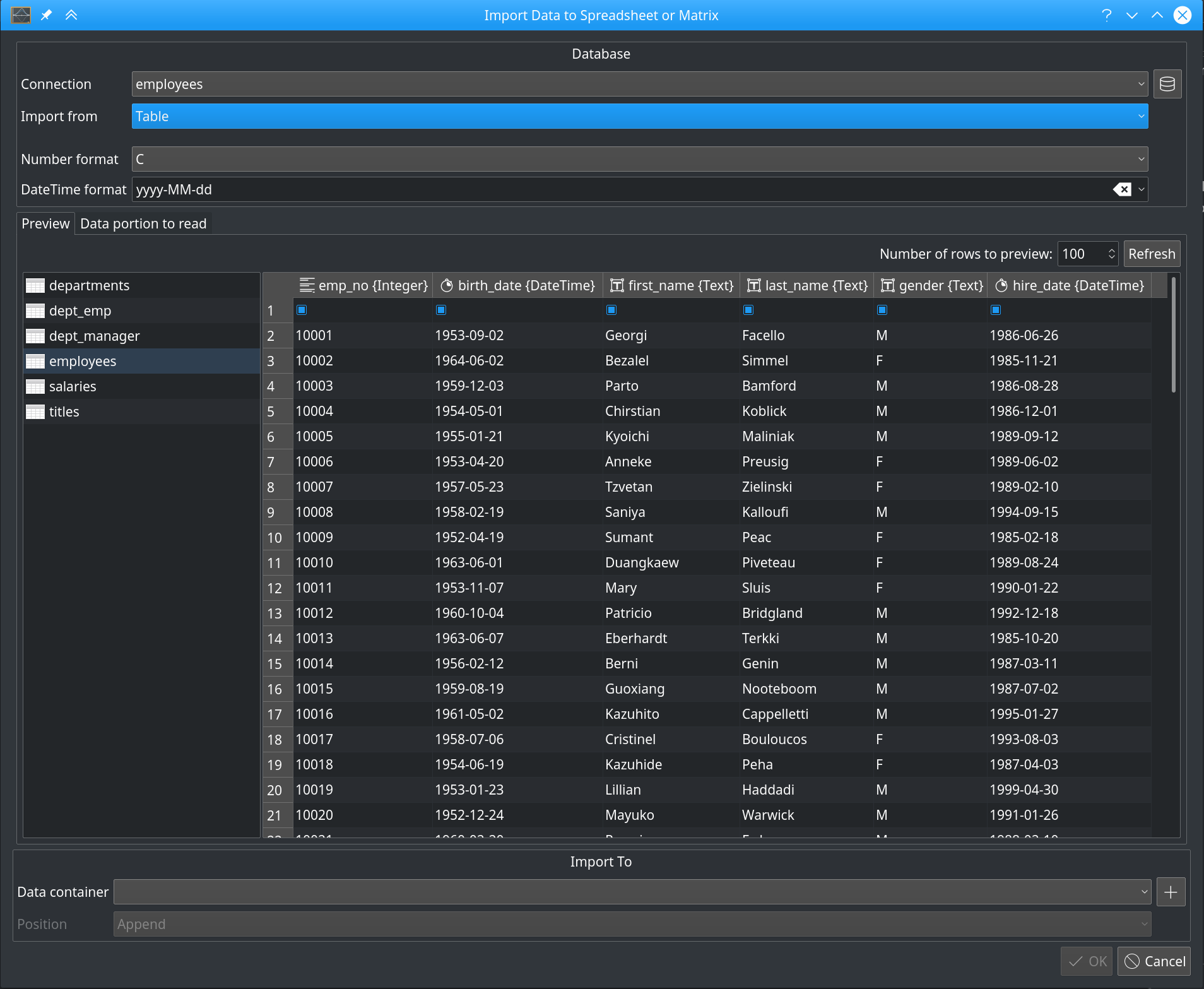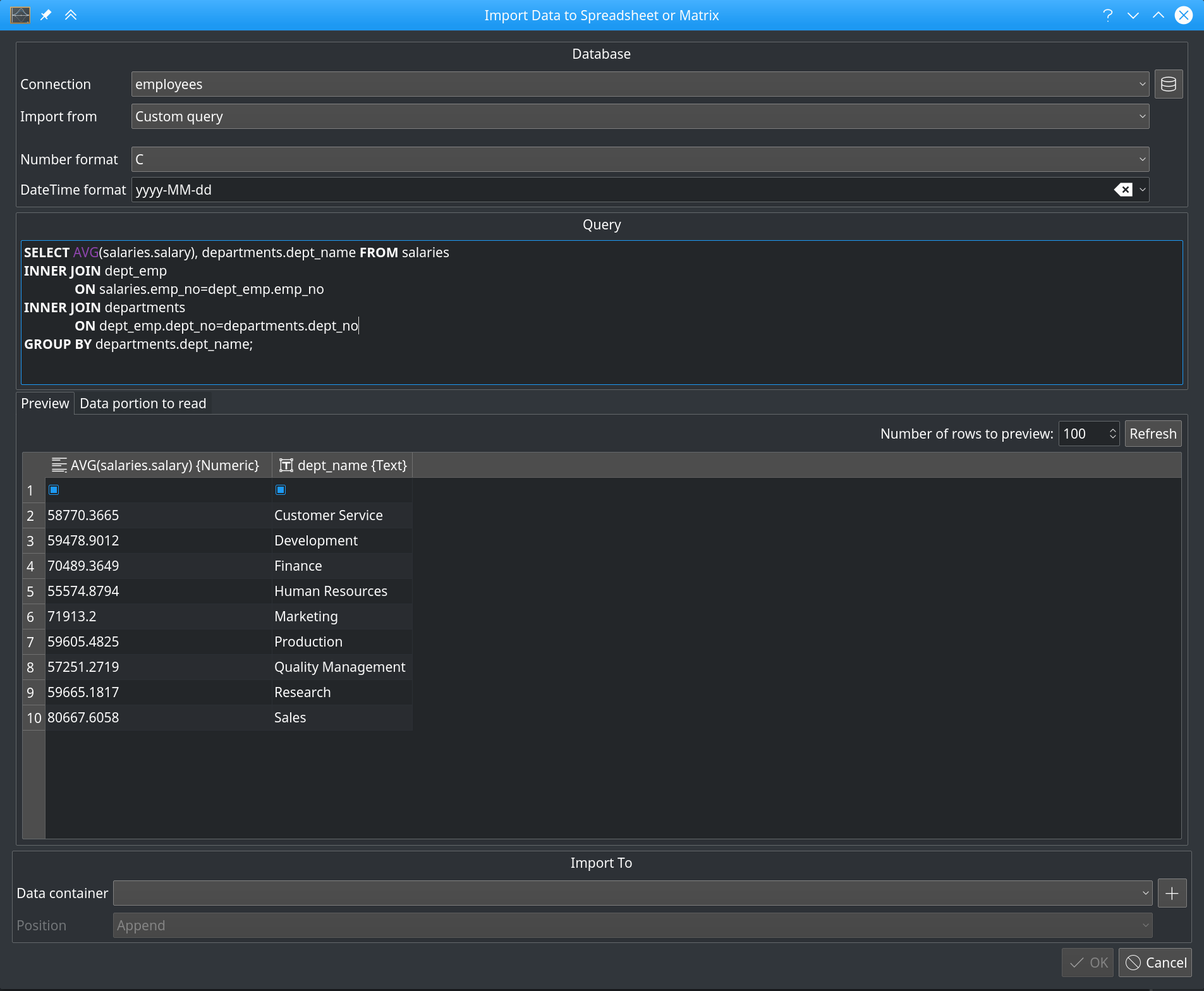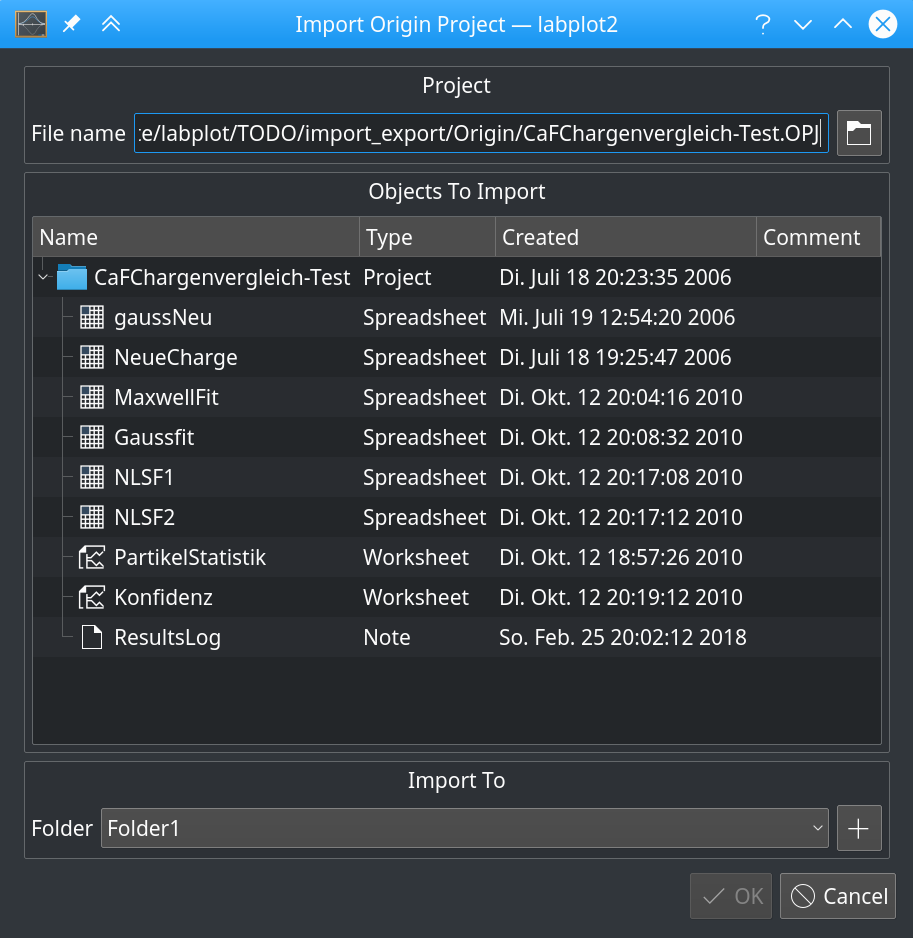LabPlot 2.5 released
It took much more time to finalize the release than we planned in the beginning after the 2.4 release was done. But we hope the number of features we implemented for 2.5 and their impact on the workflows supported by LabPlot can justify this delay. The source code and the installers for Windows and for Mac OS X can be found on our download page, as usual.
In this release we again increased the number of data sources and added the support for the import of data from SQL databases. The user can import either from single tables or import the result of a custom SQL queries.


Starting with 2.5 we can import © OriginLab Origin projects files. It goes without saying that the first release having this feature cannot handle the complete feature set of Origin. In this release we concentrated on the import of Origin’s data containers – workbooks and matrix books and 2D-plots. A new dialog for the project import was added that provides a preview of the content of the selected project file and where the user can select which objects to import:

Similar to the import of Origin projects, we support the import of native LabPlot projects. With this, complete or partial merging of different projects becomes possible. More information on this feature can be found here.
Another major new feature is the support of live data. We dedicated a blog recently to this topic. Though it is possible to read live data from files, pipes and different types of sockets (local, TCP, UDP), the support for sockets is experimental in this release and will be made more stable in the next release.
Among other smaller improvements in the area of data import we want to mention the new ability of LabPlot’s main window to react on drag&drop events. Now, if the user drags a file and drops it on LabPlot, the import dialog is immediately opened and the user can specify how to import the file. Similar for project files – drag&drop of LabPlot and Origin project files loads the project.
More work was also invested in the auto-detection of data types during the import. Some additional options in the import dialog were added where the user can specify the locale and the format for date/date-time values to be used during the import.
We implemented couple of nice features for faster creation of plots and curves:
This was described in more details in the dedicated blog post for UX improvements. There are couple of other smaller changes that will improve the general user experience like the syntax highlighting for LaTeX code in text labels, tool tips for the supported mathematical functions and constants in text fields for mathematical expressions and the animated zooming in worksheet views.
Similar to the previous releases, we continue working on the data analysis functions in LabPlot. In 2.5 we greatly improved data fitting and added some logic to automatically guess the parameters for fit models specified by the user, for fitting with weights, etc. We refer to the blog which describes the new features in more detail.
Theming that was added in LabPlot 2.4 was further extended and improved. Now, also plot legends and text labels respect the color palettes defined in a theme and it is possible to apply a theme to the whole worksheet and to all its children and not to single plots only. We added a new application options for the default theme that has to be used for new worksheets. With this option the user can select and theme that will be applied on default of every new worksheet and its children.
On the plotting side, among several smaller fixes and performance improvements we now automatically switch to the scientific representation for numbers bigger than 10^4 on the axis tick labels. Furthermore, we added the possibility to add new text labels to the plots. With this, in addition to the already and always available text label for the plot title the user has the possibility to add more text information to the plot.
The command line interface was extended and we added the options to start the application in the presenter mode and to specify the name of the (LabPlot or Origin) project file to open it directly upon start.
The list of the supported mathematical functions was extended. Users compiling with GSL 2.4 can use Hermite polynomials in LabPlot. Users compiling with libcerf will benefit from many different complex error functions.
Though the primary development and testing happens on Linux mostly, we invested more into Windows and Max OS X builds and provide a better support for these platforms now. Also, with this release we ship for the first time a version of Cantor on Windows and Max OS X to provide the support for common open source computer algebra systems in LabPlot as introduced in 2.3 also on these platforms. This feature is experimental on these platforms at the moment but it will get more attention in future from us and we hope to be on par soon with what we have for Linux versions.
All in all, a lot of new features and improvements this time! This release took quite a lot of our time and required a lot of effort to finalize everything. It was not always easy but now when everything is done we can relax a bit. But only a bit :-). This year we have two GSoC-students working on really cool projects that will enable LabPlot to read data from MQTT and from web services. Besides this, couple of other features are already in progress and we hope to bring another release this year.
Hallo. i installed windows package of labplot 2.5 but i can’t get it to connect to my postgreSQL backend.
It seems the installer doesn’t install any Postgres driver, and it doesn’t use the ODBC driver that MSAccess uses.
infact the combo box “Driver” of “SQL Database Connections” is empty.
How can i solve the problem?
Thanks.
Hi Sergio,
sorry for the late reply… We’ll try to package the PostgresSQL driver with our installer in the next release. Until then, simply download the driver and put it into LabPlot’s folder. As to ODBC, to be hones, we didn’t check this. This will probably need some more development. We’ll check this.
Regards,
Alexander
hi, Alexander. Great job.
I have great interest in using Labplot2.
However, when I tried to install the software for six times, it always show that “abPlot2 cannot be opened because of a problem.”
Anything wrong in my installation. I believe that I downloaded the software properly.
Hi Jacky,
sorry for the late reply. Which system are you using? Is this on windows? Do you get more for the error message? Any kind of additional information would be helpful. Thanks.
Regards,
Alexander
Hello,
i installed the windows package of labplot 2.5 but i can not create a CAS Worksheet.
I clic but nothing happen. How does it work please ? Do i have to install backend programs ? Octave is already in my windows session.
Thanks.
Hello Sullivan,
sorry for the late reply. We’re working now on 2.6 where a much improved version of the CAS code will be shipped. We hope to address with this a lot of reported problems. I’ll notify once we have a working release candidate build for windows for 2.6.
Regards,
Alexander